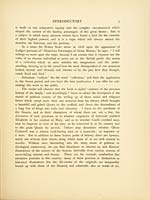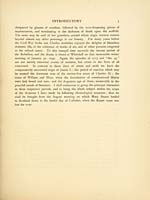Stuarts
(22) Page 4
Download files
Complete book:
Individual page:
Thumbnail gallery: Grid view | List view

4 THE STUARTS
having been executed by some of the greatest miniature painters known to
fame — the Olivers and Samuel Cooper, to wit. Moreover, there are other
representations of the events with which the times are crowded, and of the
places wherein they happened ; and, in addition to all these, there is an
almost overwhelming choice of relics, religiously preserved, and testifying to
the devotion and enthusiasm felt for the persons and the cause of the Stuarts.
It is just these personal things which seem to make the men and women
to whom they appertained live and move, and which bring them so close to
us. When we look, for example, upon the leading-strings so beautifully
worked by Mary Stuart for her baby boy (James I. and VI.), do we not
feel a touch of nature, and realise that she must have been one of like
passions with ourselves, that she was not merely an ill-fated monarch, but a
woman, endowed with the supreme dignity of womanhood, namely, maternity ;
and does this not deepen the human and pathetic interest of her career ?
The same thing may be said of many another relic, trifling in itself perhaps,
but pregnant with associations which words inadequately express. Are not
the dark hours in which Charles I. trod the valley of the shadow of death
with such dignity and such resignation, brought vividly before us when we
look upon the two watches he habitually wore, and which he gave on the
morning of his execution to Sir Thomas Herbert ? Or, to come to later
times, when we see, as we may do, the "George" worn by Prince Charlie
in Edinburgh, and portions of his disguise as Betty Burke, the serving-maid,
which he wore after Culloden, do these not give a final touch of reality to
the story of his wanderings and of his escapes ?
The period embraced by this work, extending from the days of the
Tudors to the Georges, was marked by a series of conflicts between great
opposing forces ; in the one camp were ranged the Romanists, in the other
the Reformers ; on the one side stood the champions and defenders of
feudal privileges and of the divine right of kings ; on the other, the asserters
of popular liberties and of individual freedom. But whilst tempests swept
across our national life, there were lulls, so to speak, from time to time, and
periods of apparent calm ; so, too, with individuals of the Stuart dynasty, we
shall find that even the stormiest career had its quiet moments, and that
the morning of the life of some of them was bright, if not joyous. For
example, take the story of Mary Stuart ; her early days in France stand out
by themselves as a time of innocence and happiness, and even the period
of her conflict with the turbulent and rapacious nobles of Scotland was
having been executed by some of the greatest miniature painters known to
fame — the Olivers and Samuel Cooper, to wit. Moreover, there are other
representations of the events with which the times are crowded, and of the
places wherein they happened ; and, in addition to all these, there is an
almost overwhelming choice of relics, religiously preserved, and testifying to
the devotion and enthusiasm felt for the persons and the cause of the Stuarts.
It is just these personal things which seem to make the men and women
to whom they appertained live and move, and which bring them so close to
us. When we look, for example, upon the leading-strings so beautifully
worked by Mary Stuart for her baby boy (James I. and VI.), do we not
feel a touch of nature, and realise that she must have been one of like
passions with ourselves, that she was not merely an ill-fated monarch, but a
woman, endowed with the supreme dignity of womanhood, namely, maternity ;
and does this not deepen the human and pathetic interest of her career ?
The same thing may be said of many another relic, trifling in itself perhaps,
but pregnant with associations which words inadequately express. Are not
the dark hours in which Charles I. trod the valley of the shadow of death
with such dignity and such resignation, brought vividly before us when we
look upon the two watches he habitually wore, and which he gave on the
morning of his execution to Sir Thomas Herbert ? Or, to come to later
times, when we see, as we may do, the "George" worn by Prince Charlie
in Edinburgh, and portions of his disguise as Betty Burke, the serving-maid,
which he wore after Culloden, do these not give a final touch of reality to
the story of his wanderings and of his escapes ?
The period embraced by this work, extending from the days of the
Tudors to the Georges, was marked by a series of conflicts between great
opposing forces ; in the one camp were ranged the Romanists, in the other
the Reformers ; on the one side stood the champions and defenders of
feudal privileges and of the divine right of kings ; on the other, the asserters
of popular liberties and of individual freedom. But whilst tempests swept
across our national life, there were lulls, so to speak, from time to time, and
periods of apparent calm ; so, too, with individuals of the Stuart dynasty, we
shall find that even the stormiest career had its quiet moments, and that
the morning of the life of some of them was bright, if not joyous. For
example, take the story of Mary Stuart ; her early days in France stand out
by themselves as a time of innocence and happiness, and even the period
of her conflict with the turbulent and rapacious nobles of Scotland was
Set display mode to:
![]() Universal Viewer |
Universal Viewer | ![]() Mirador |
Large image | Transcription
Mirador |
Large image | Transcription
Images and transcriptions on this page, including medium image downloads, may be used under the Creative Commons Attribution 4.0 International Licence unless otherwise stated. ![]()
| Histories of Scottish families > Stuarts > (22) Page 4 |
|---|
| Permanent URL | https://digital.nls.uk/95239315 |
|---|
| Description | A selection of almost 400 printed items relating to the history of Scottish families, mostly dating from the 19th and early 20th centuries. Includes memoirs, genealogies and clan histories, with a few produced by emigrant families. The earliest family history goes back to AD 916. |
|---|

